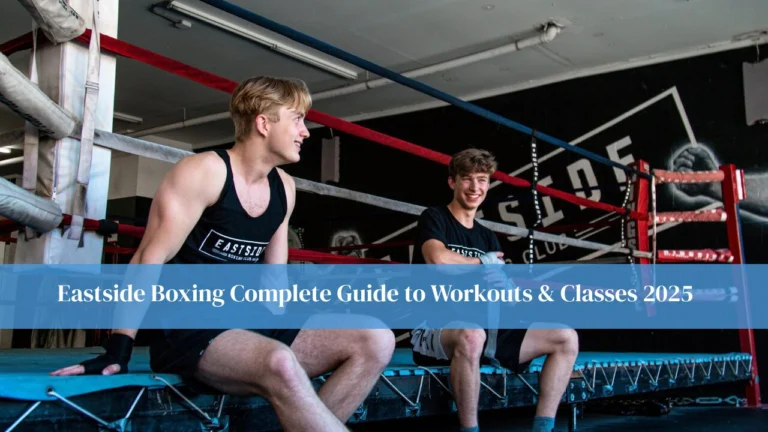If you want to get better faster in boxing, the very first step is to stop repeating the same mistakes. Too many beginners assume progress means simply hitting the heavy bag harder or sparring longer, but true growth comes from refining and correcting the small details. This guide covers the Basic Boxing Techniques that every beginner and even many intermediate boxers need to fix, along with practical ways to correct them. Whether your goal is fitness, competition, or simply confidence in your ability, perfecting fundamentals will shave months off your learning curve and make training more rewarding.
Key Takeaways
- Focusing on fundamentals like stance, guard, footwork, and jab mechanics prevents injuries and builds a strong boxing foundation.
- Small technical corrections significantly improve efficiency, power, and defensive ability in both training and sparring.
- Structured practice with tools like double-end bags, speed bags, and agility drills accelerates skill development.
- Consistent, progressive training over weeks leads to noticeable improvements in balance, precision, and confidence.
Why fixing basics matters
When it comes to boxing, poor fundamentals don’t just look sloppy; they compound into long-term problems. A crooked guard, lazy jab, or unbalanced stance doesn’t merely cost points in the ring, it also teaches the body bad habits that are much harder to unlearn later. More importantly, flaws in technique increase the risk of injuries such as sprained wrists, twisted ankles, or unnecessary head trauma. Correcting small errors early allows you to build a stable foundation that improves both safety and performance.
By focusing on getting the basics right, you conserve energy and move more efficiently. Instead of wasting stamina on poor mechanics, you redirect strength toward sharper punches and quicker defensive reactions. Clean technique also makes learning advanced skills far easier, because you’re not fighting against ingrained bad habits. A boxer who has solid fundamentals finds sparring sessions less intimidating, discovers more counter opportunities, and develops the confidence to try new strategies.
The most common basic mistakes and how to fix them
Stance: too narrow, too wide, or unbalanced
One of the most overlooked errors in beginner boxing is a flawed stance. Many new boxers either stand with their feet too close together, which creates instability, or too far apart, which makes movement clumsy and slow. Weight distribution is another problem shifting too much weight forward makes you vulnerable to counters, while leaning back reduces punching power.
A solid stance is the root of all good boxing. Without it, punches lack strength and defensive movements become risky. To correct this, practice what many coaches call the “wall check” drill. Place your lead foot a fist-length away from a wall, bend your knees slightly, and balance your weight on the balls of your feet. From there, practice moving laterally and forward while maintaining that same posture. With repetition, your body begins to memorize the balance and spacing required for a strong stance.
Guard: hands too low or elbows flared
Another mistake beginners frequently make is keeping their hands too low or letting their elbows flare outward. This weak guard leaves the face, ribs, and solar plexus dangerously exposed. Some fighters drop their hands unconsciously when they get tired, while others simply lack the habit of tucking their elbows in.
A proper guard doesn’t just protect; it instills confidence. When your face feels secure, you commit more fully to offense and can react to counterpunches with less hesitation. To fix this, shadowbox in front of a mirror while keeping your gloves tight to your cheekbones and elbows close to your torso. If you want to add difficulty, loop a light resistance band around your wrists, forcing you to maintain tension and keep the guard locked in place. Over time, this becomes your natural resting position in the ring.
Poor footwork: stepping flat-footed or crossing feet
Flat-footed footwork is a habit that slows boxers down and makes them easy to read. Crossing the feet while moving is equally dangerous, as it throws balance off and leaves you open to counterpunches. Good footwork should feel light and fluid, allowing you to glide in and out of range without telegraphing your intentions.
Think of footwork as your ability to control space. A boxer who moves correctly can dictate distance, create angles, and escape danger with minimal effort. One of the best ways to improve is through ladder drills. Use a speed ladder or place cones on the floor, then practice moving quickly in and out while keeping weight on the balls of your feet. The goal is to step lightly and silently, training your legs to react fast and without crossing.
Jab mechanics: reaching or dropping the shoulder
The jab is often called the most important punch in boxing, but many beginners execute it poorly. A common flaw is overextending the arm, which reduces power and leaves the boxer off balance. Another issue is dropping the lead shoulder as the jab retracts, exposing the chin to counters.
The jab should be a sharp, snappy punch that sets rhythm and controls distance. A good way to fix mechanics is by practicing on a double-end bag or with a partner holding a target. Focus on extending quickly, snapping the jab back just as fast, and immediately returning to your guard. Over time, you’ll notice your jab becomes both faster and harder to predict.
Power punches rotating from the hips, not the arm
Many beginners throw power punches with just their arms, which drastically reduces force and tires the shoulders quickly. Real punching power is generated from the ground up, starting with the legs, transferring through the hips and torso, and finally delivered by the shoulder and fist.
To correct this, focus on hip rotation drills such as medicine ball twists. Hold a light ball at chest level and rotate forcefully from side to side, mimicking the torque of a cross or hook. Combine this with slow-motion shadowboxing, exaggerating the hip turn until the motion feels automatic. Once integrated, you’ll notice your punches land with far more authority, even without additional muscle strength.
Hooks and uppercuts telegraphing and elbow position
Hooks and uppercuts are powerful short-range punches, but beginners often telegraph them by swinging too wide or dropping the elbow before striking. This not only reduces effectiveness but also creates big defensive gaps.
The key is compactness. Work with a coach or partner on close-range mitt drills, focusing on chambering the elbow correctly and snapping the punch rather than swinging. The smaller the movement, the faster and more deceptive your hook or uppercut becomes.
Defense: poor head movement and footwork combined
Some beginners rely too heavily on a static guard and forget that boxing is about dynamic defense. Without slips, rolls, or pivots, you become a stationary target. Worse, absorbing punches on the gloves and arms still drains energy and takes a toll over time.
To improve, practice slip-and-counter drills with a partner. Have them throw light jabs while you slip to the outside and immediately return a jab or cross. Repeat in short intervals, gradually building speed. This not only sharpens defense but also teaches you how to turn evasive maneuvers into offensive opportunities.
Conditioning training like a sprinter instead of a boxer
Conditioning is another area where beginners go wrong. Some focus exclusively on long-distance cardio, which builds endurance but reduces explosiveness. Others do only short sprints and neglect sustained energy systems. Boxing demands both high bursts of intensity followed by quick recovery.
A simple way to align training with boxing demands is by mixing technical work with conditioning intervals. For example, complete two minutes of controlled shadowboxing focused on technique, then immediately follow with 30 seconds of all-out bag work. This combination trains the body to maintain form while fatigued, which mirrors real fight conditions.
A simple 8-week mini-program to fix fundamentals
Improvement in boxing comes from consistent, structured practice rather than occasional bursts of intensity. An eight-week program can help lock in the basics while gradually increasing difficulty.
For the first two weeks, concentrate on slow, controlled repetitions of stance, guard, and jab drills. By weeks three through five, add more speed and introduce resistance tools such as bands or light weights. In weeks six to eight, increase specificity with mitt work and light sparring while keeping technical drills as the backbone. Over the course of two months, you will notice sharper movements, cleaner mechanics, and improved endurance.
Tools and drills you should use regularly
A boxer’s toolkit is as important as the workout itself. The double-end bag builds timing and jab sharpness. The speed bag improves rhythm and shoulder endurance. The heavy bag reinforces power and combination flow, while shadowboxing allows you to visualize opponents and refine technique without resistance. Agility ladders or cones sharpen your footwork and force you to stay light on your feet. By integrating all of these tools weekly, you create a balanced development plan.
Coaching tips & common beginner corrections
Boxing is a sport where small adjustments yield big results. Tuck your chin slightly without burying it in your chest to reduce exposure. Always return to guard between punches, treating it as your default stance. Aim to punch through your target rather than simply at it, imagining the fist passing through an opponent for maximum impact. Finally, remember to breathe with each strike, exhaling sharply to engage your core and prevent exhaustion.
FAQs
How quickly will fixing basics show results?
If you consistently train three to four times per week, you’ll notice balance improvements and sharper punches within two to four weeks. The more regularly you practice targeted drills, the faster progress will show.
Which mistake should I fix first?
Start with your stance and guard. These two elements form the backbone of boxing and influence every other technique. Once you are stable and protected, advancing to footwork and jab mechanics becomes much easier.
Is strength training necessary for better technique?
Strength training helps, but boxing is primarily about movement efficiency. Prioritize core and hip strength along with mobility. While lifting weights contributes, refining technique ensures those physical gains translate effectively in the ring.
Can I fix these errors alone or do I need a coach?
You can make progress alone with shadowboxing, bag work, and self-correction drills. However, a coach provides immediate feedback and ensures you don’t reinforce mistakes. Even occasional check-ins with an experienced trainer make a huge difference.
Conclusion
Correcting the Basic Boxing Techniques described here accelerates your development, protects your health, and makes training sessions more fulfilling. Instead of adding endless hours of bag work or sparring, direct your energy toward fixing common flaws. Start by choosing one or two drills from this article, focus on them consistently for two weeks, and observe the transformation in your footwork, balance, and punching sharpness. Visit Boxing Essential to explore more.




